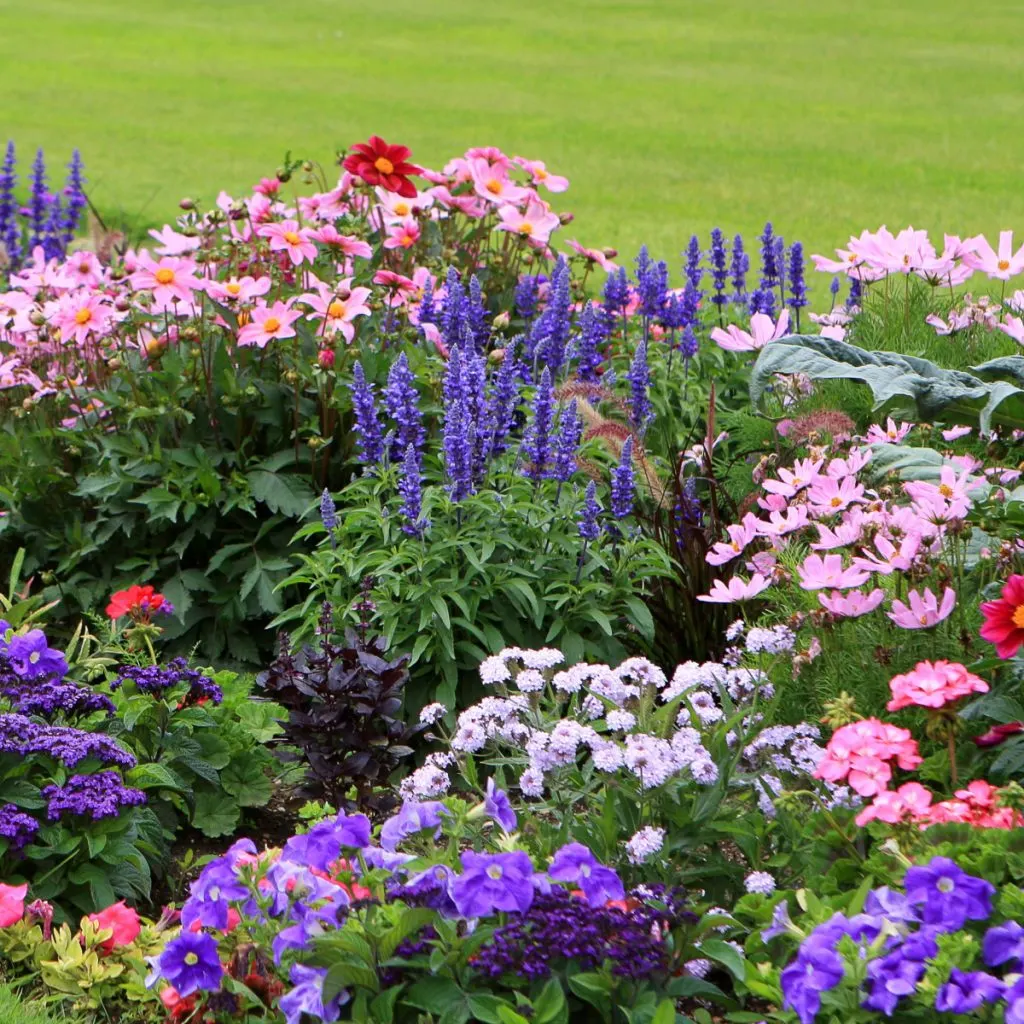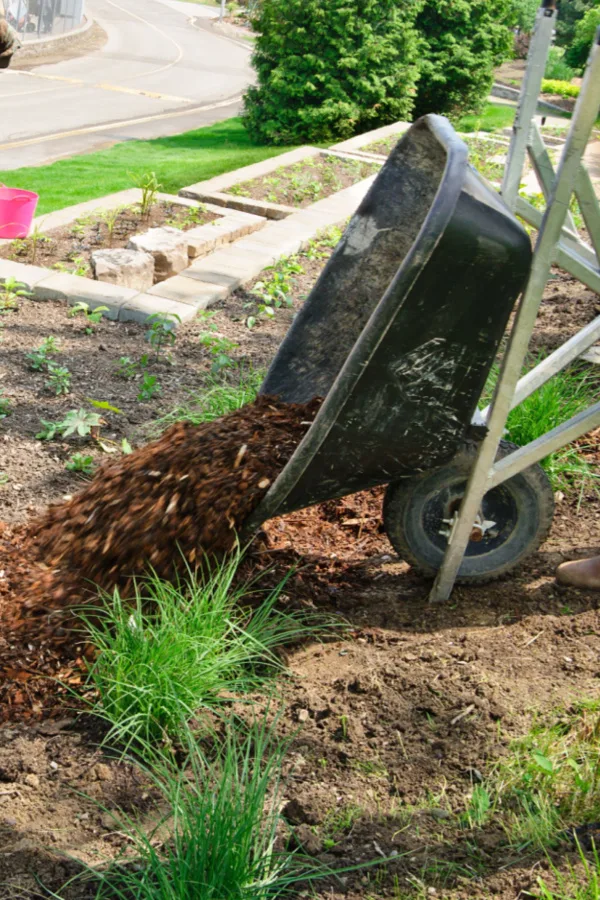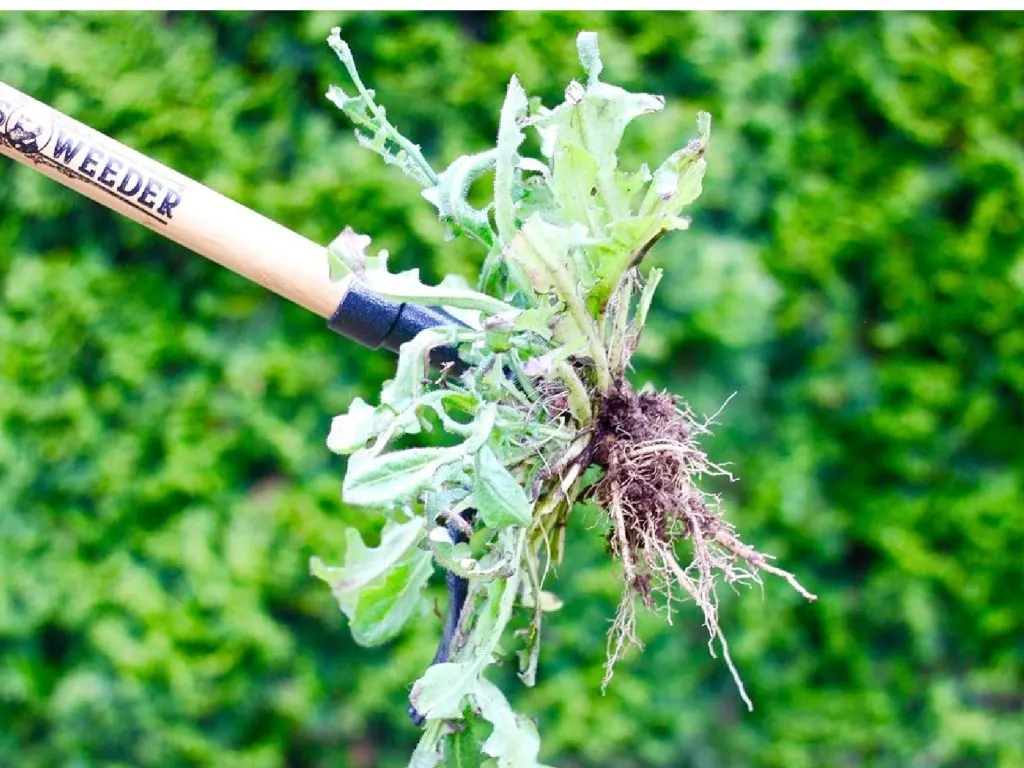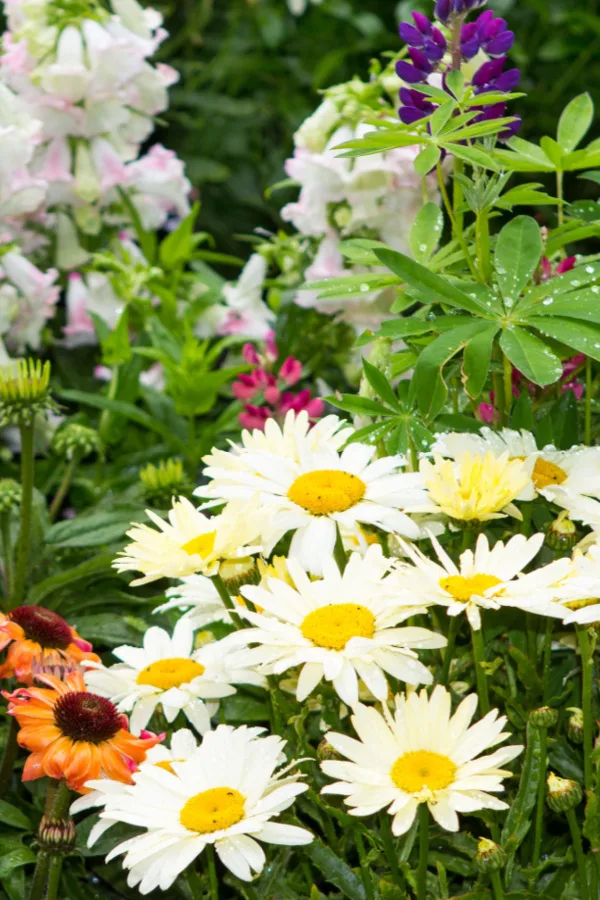Looking to finally eliminate all of those pesky weeds that come back to haunt you and your flowerbeds every single spring, summer and fall? Today, we’ll showcase two simple secrets that can do just that – and do so with you working in your beds less than you ever have before!
When it comes to some of the most dreaded of all outdoor chores, weeding is high on the list. In fact, for many gardeners, it tops the list! Especially when it comes to trying to keep flowerbeds free and clear of unsightly weeds that just keep coming back.
Weeds are unfortunately more than just a visual nuisance. Not only do they take away from the natural beauty of perennials, annuals and shrubs, they also steal valuable moisture and nutrients from the soil where they grow. All of which can lead to your plants not getting the energy they need for better health and stronger blooming.

But as difficult as it can seem to keep weeds out of your flowerbeds, you might just be surprised how easy it can be to finally get a handle on your weeding issues – all by working less in your beds. That’s right, as it turns out, more often than not, many of the recurring weeding headaches that gardeners face are a result of simply working their beds too much!
So with weed free success in mind, let’s take a look at two simple secrets that can have your flowerbeds healthy, blooming, and most of all – free and clear of weeds this year!
2 Simple Secrets To Eliminate Weeds In Flowerbeds – For Good!
When it comes right down to it, weeds need one thing to establish – bare soil. And the less bare soil there is, the less chance weed seeds will ever find a home to sprout.
So how do you keep soil covered up? The first and easiest way is with mulch. But as you will see below, it’s how and when you put that mulch down, and what you do with it once it’s down that really matters most when it comes to eliminating weeds.
#1) How To Mulch To Stop Weeds – 2 Simple Secrets To Eliminate Weeds In Flowerbeds
It happens every spring for most gardeners. The annual ritual of mulching their flowerbeds. But as simple and straightforward as the process of mulching flowerbeds sounds, it’s at this very point that gardeners often make a few critical mistakes that instead of helping to stop weeds, actually aid in creating more future weeds than ever.

The first mistake gardeners make is to rake and stir up last year’s mulch. It seems like a good idea on the surface. After all, it freshens up the beds and helps the old mulch look new again. But it’s actually one of the fastest ways to fill your beds with future weeds!
When mulching in the spring, the key is to disturb the mulch and soil as little as possible. Why? Because since last fall, weed seeds have been blowing in and dropping from everywhere. And the minute you turn that mulch or dig into the soil, you now allow those weed seeds a path to the soil. And to germinate in the future.
The “Work Less” Approach – 2 Simple Secrets To Eliminate Weeds In Flowerbeds
Instead, approach your spring beds with a simple “work less” approach. Start by digging out any single weeds that may be in the bed spaces. And when you do, dig only the weed out – opting against digging large shovel fulls of dirt up.
Again, the less dirt and mulch you disturb, the less weeds seeds on top find a home below. Use a small weeding tool or a stand up weeder than grabs only the root and pulls it from the earth. They make weeding easy – and help to stop future weeds. Affiliate Link: Grampa’s Weeder – The Original Stand Up Weed Puller Tool With Long Handle

Mulching For Weed Control – 2 Simple Secrets To Eliminate Weeds In Flowerbeds
Once your beds are clean – now it’s time to mulch. And for success, you have to mulch deep! The second mistake gardeners make when mulching is to only put a few inches of mulch on their beds. It simply isn’t enough.
Two to three inches of mulch cannot protect weed seeds from sifting down to the soil. Nor can it prevent weed seeds underneath from germinating. If you only put a few inches of mulch in your flowerbeds, it really is like throwing your money away.
In order to work, a layer of mulch needs to be a full four to six inches thick. This will not only eliminate the chance of seeds sifting down to bare soil, but will also snuff out seeds that happen to be on the soil’s surface, keeping them from sprouting.
And last but not least, once you put your thick layer of mulch down, leave it alone! Do not stir or rake the mulch during the season to try to “freshen” it up.
Listen In To Our Podcast Below On How To Stop Flowerbed Weeds For Good!
Again, raking and turning the mulch will only allow weed seeds a chance to find a home. Instead, spot pull small weeds, and if need be, only add to existing mulch on top to freshen it up. See: The 3 Biggest Flowerbed Mulching Mistakes – And How To Avoid Them
The less you touch the mulch and the soil, the less weeds you will have. As for the mulch itself, four to six inches in depth might sound like a lot of mulch. Well, the thickness for sure is. But as you will see, by following the second secret tip to eliminating weeds below – you will need less and less of that mulch with each passing year!
#2 Fill Beds With Plants Instead Of Mulch! 2 Simple Secrets To Eliminate Weeds In Flowerbeds
Although you do need to put mulch on thick, by simply filling your flowerbeds with more plants – and less open spaces and mulch, you can cut your weeding issues to almost zero. All with little extra effort!
Packing plants into your flowerbeds is the answer to so many flowerbed issues. For starters, when there is a full canopy of foliage, weeds seeds can’t find a way to the soil’s surface. And even if they happen to, all of those plant leaves block the light they need to germinate.
But even more, all of that foliage helps to conserve valuable moisture in the soil. That in turn means your plants stay healthier and stronger, and require far less watering too.

The best part of all? Filling your beds doesn’t have to be costly. Perennials can be divided regularly to create additional plants for free. How To Divide Your Perennials In The Fall – Create More Plants For Free!
In the short term, when planting in flowerbeds, don’t leave large open spaces of mulch. Keep flowerbeds smaller but full – and only expand them as you can divide and transplant more plants to keep them filled. You will be amazed at how by simply packing your beds full of gorgeous flowers – your weed problems all but disappear.
Here is to working less – and eliminating the weeds in your flowerbeds by doing so!
Follow Our Facebook Page For Great Gardening Tips And Advice! This Is My Garden Facebook Page
This Is My Garden is a garden website created by gardeners, for gardeners. Jim and Mary Competti have been writing gardening, DIY and recipe articles and books and speaking for over 15 years from their 46 acre Ohio farm. They publish three articles every week, 52 weeks a year. Sign up today to follow via email, or follow along!
